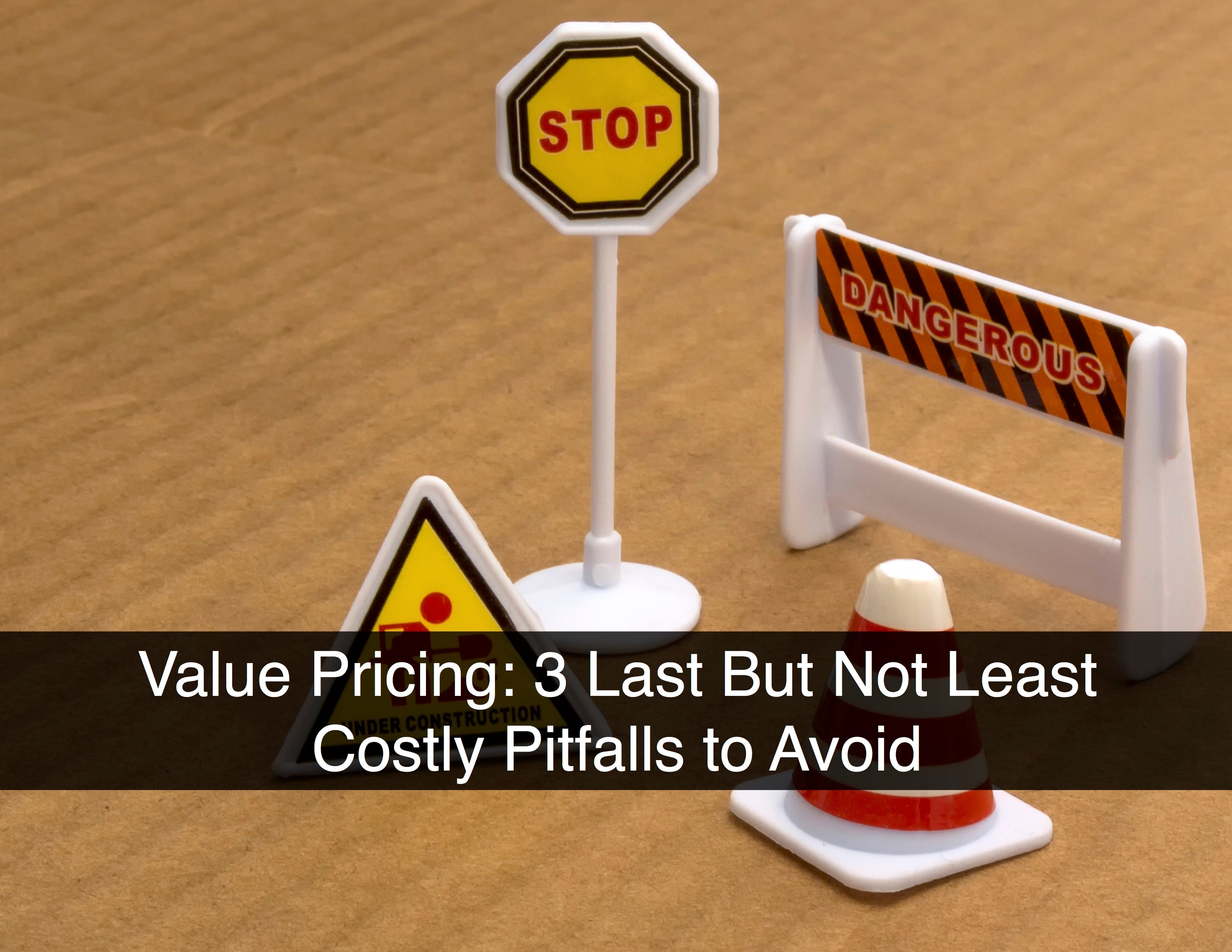 Our series on value pricing wraps up with three pitfalls that can jeopardize future sales, customer satisfaction and of course, your bottom line.
Our series on value pricing wraps up with three pitfalls that can jeopardize future sales, customer satisfaction and of course, your bottom line.
Pitfall #1: Choosing maximum price over optimum price.
A previous discussion on market size and share emphasizes the importance of considering how your pricing might impact current customers. If a higher price no longer delivers comparable value, you risk losing future sales to competitors or in-house solutions. The optimum price is one that yields the most revenue while providing high value to your customers.
Pitfall #2: Not re-evaluating your value position and pricing over time.
The goal of pricing, and especially value pricing, is to maximize the earnings impact of your offering on your business. And every pricing model is based on multiple variables that are interdependent and vary over time. Your goal is to maximize profitability over the life of the offering but if you don’t revisit these variables and reassess the value you provide, your pricing can alienate current and future customers.
Pitfall #3: Using individual customer value to set prices.
This no-no is when you charge a different price based on an individual customer’s perceived value of your offering. How would you feel if you paid twice as much for the same item as another customer? Chances are you won’t buy from that vendor again.
Can You Imagine?
You need a new suit. Imagine entering a store and being grilled by a sales rep to “determine your needs and identify which suit will be the best ‘value’ for you.” Imagine being asked where you live and what kind of car you drive, or questioned about your profession and how much you earn. Based on your answers, the sales rep proudly presents “the perfect suit” for you and only then do you learn the price of the suit.
It sounds high but after all, shouldn’t “the perfect suit” cost a little more? And don’t you deserve it? So you agree to the purchase, only to realize that the guy next to you at the register is buying the exact same suit for half the price you’re paying. How do you feel about your suit and the vendor? Chances are you will never visit that store again, and you’ll tell people about your negative experience.
A Quick Way to Lose Customers
This is an exaggerated consumer example of poorly implemented value-based pricing, more likely to happen in the B2B space. We are big advocates of value-based selling tools to help customers estimate the value of solving a problem, but if a customer thinks the information they gave you was used to set their specific price, you are likely to have a problem. Even if they follow through with the purchase, they are likely to look elsewhere for their next purchase.
When setting prices, you should absolutely use market information about customers and segments. But tricking individual customers into giving you information in order to set their price is not a good idea. The only exception is if you’re willing to enter into a value-sharing agreement, where you take some of the risk and share in the upside.
Conclusion
Every pricing model, including cost-based, market-based and psychological pricing, has risks and potential rewards. But when approached carefully and thoughtfully, today and over time, value pricing offers the greatest potential to maximize earnings for your company based on the value you provide to customers.
Today’s value selling tools make it easy to integrate value selling into your sales and marketing processes. When your team can present a compelling business case that quantifies the value of your offering, you’ll be rewarded with more sales and happier customers.









